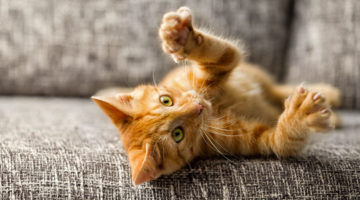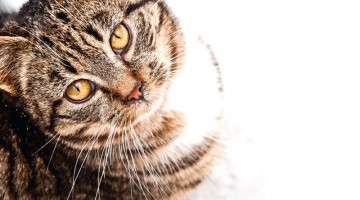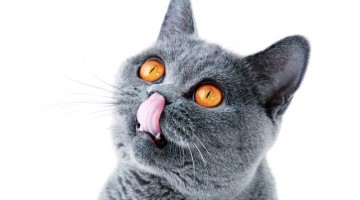Trimming those talons is a necessary task that takes some patience. Here’s how to ensure cutting her claws doesn’t lead to scratches and cuts.
Claw clipping. It’s enough to elicit groans from the most devoted cat lover. In principle, the procedure seems simple enough. Just place the cat on a firm surface, with her butt tucked into the crook of your arm, gently press on each toe till the claw is extended, watching for the quick, quickly nip off the tip of the claw with your special kitty claw clipping scissors, and praise effusively.
Thats’s all there is to it, right? Not really.
Take Mollie for instance. She’s a very good kitty who religiously uses her cardboard and sisal scratchers. But scratching rather than filing down claws removes the outer sheaths, leaving Mollie with pristine needle- sharp tips. Clipping those sharp tips has proven to be a challenge, and that’s an understatement.
Experts recommend gradually desensitizing the cat from early kittenhood by gently stroking the paws and pressing them to extend the claws. We used that tactic on Mollie, who was a shelter kitty, but she would have no part of it. Paws were off limits. We do keep trying when she’s relaxed, and she’s beginning to tolerate it, at least for a couple of minutes at a time.
Tips for clipping
- Commonly used tools include small scissor-like clippers, guillotine clippers with a longer handle, and good old nail clippers. Trial and error will determine which is easiest to use; we prefer the scissor clippers since they are the most comfortable to position. Don’t use clippers designed for dogs; you can buy small pairs made specifically for a cat’s slighter, more slender claws. Clippers that are too large are cumbersome and can twist the cat’s toe.
- Holistic veterinarian Dr. Jean Hofve says there’s no reason to clip all a cat’s claws at one time. “Even one claw a day is all right,” she says, especially if the cat is difficult.
- A technique Dr. Hofve has found helpful is scruffing, then gently pushing on the cat so her feet are firmly on the surface and she feels more secure.
- There’s also the “burrito wrap”, in which the cat is wrapped snugly in a towel with one paw extended at a time for clipping.
- Various manufacturers offer pet bags that can be used for claw clipping as well as administering medications, tooth brushing and bathing. The cat (or small dog) is placed in the bag, which is zipped shut so only his head is exposed. Four openings can be unzipped to access each paw. The pet bag hasn’t worked very well for recalcitrant Mollie. Thus far, getting her into it has proved as stressful as actually clipping her claws. The instructions recommend going easy and making it a positive experience. We tried the treat technique, which hasn’t worked to date. Two of our other cats weren’t cooperative either.
So your kitty is positioned correctly and acting reasonably cooperative. Things are going well until she twitches or you get a little carried away, and you clip the quick. First of all, when clipping your cat’s claws, it’s better to clip too little than too much. Second, accidents do happen and it’s inevitable that at some time you will cut the quick. The kitty will hiss and/or growl and the claw may bleed a bit. Some pressure, or a little bit of flour or ice, should quickly stem the bleeding. Fortunately, cats are quick to forgive.
Are there alternatives?
There are various products on the market that can help circumvent the whole claw clipping experience.
- The Emery Cat scratching board looks like a deluxe version of your basic cardboard scratcher. It’s infused with catnip and has an emery material that files down the claws.
- PediPaws is a battery-operated device that files down the claws.
- Soft Paws nail caps have been around for some time. They should be put on by a veterinarian, at least the first time, and must be replaced as the claws grow out.
- Sticky Paws is a double-sided tape you put on upholstery and others areas to discourage scratching.
We’ve learned to co-exist with Mollie and her claws. The effort it takes to occasionally clip them is worth it when we see how much she enjoys working out on her scratching posts.







No Comment